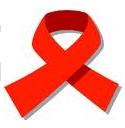As HIV/AIDS cases continue to increase in Indonesia, the government on Monday renewed efforts to fight the infectious disease as part of the activities carried out to observe World AIDS Day, December 1. The Health Ministry, the National AIDS Commission (KPA), the Family Planning Coordinating Agency (BKKBN) and a number of condom producing companies signed an agreement to fight HIV/AIDS.Official records mentioned that there are now 298,000 HIV/AIDS sufferers in Indonesia, but the real figures may be much higher than official figures, which is often described as the tip of the iceberg. Even though the number of new cases in the country continues to increase, the government is optimistic it could be offset with a serious effort and close cooperation with various agencies and the people as a whole.
Coordinating Minister for People’s Welfare Agung Laksono said he was optimistic the government would be able to minimize HIV/AIDS infection by 1.2 million people in 2015. “Before 2015, with the government efforts we hope we can minimize the HIV/AIDS infection by up to 1.2 million people, he said when launching a National Condom Week (PKN) here on Monday.He said that among the efforts carried out by the government to prevent the spread of the contagious disease was to engage in sustainable partnership cooperation through a national movement for creating healthy people, away from the HIV/AIDS threat.The efforts also included promotional and preventive measures through the PKN activities where people were informed about how to use condoms as a means of minimizing the spread of HIV. The government also launched curative approaches through conducting medicinal treatment and research on advanced HIV/AIDS cases in Indonesia.
Agung Laksono called for regional governments’ commitment to supporting the steps taken by the central government to reduce the spread of HIV/AIDS in the country. Secretary of the National AIDS Commission (KPA) Secretary Nafsiah Mboi said KPA in cooperation with its branches in provinces and districts supported the government’s efforts to prevent the spread of the disease which has shown signs of increasing.”We support the government efforts to fight AIDS in an effort to achieve the sixth aim of the Millennium Development Goals, namely increasing the people’s health standard through reduction of HIV/AIDS infection cases,” she said. The government admitted that cases of new contraction continued to increase. “About 298,000 people in Indonesia are now suffering from HIV/AIDS,” Agung Laksono said, Agung, who is also chairman of the National AIDS Commission (KPA), made the remarks when he opened the National Condom Week at the University of Indonesia.
Based on data at the Ministry of Health, up to September 2009, a total of 18,422 AIDS carriers were recorded in Indonesia. At present almost all provinces in Indonesia have AIDS cases. AIDS cases are to be found in more than half of the number of districts in the country. About 49.57 percent of AIDS cases involved people in the 20-29 years age group, 29.84 percent in the 30-39 years age group and 8.71 percent occurred in the 40-49 years age group. The average HIV/AIDS incidence in Indonesia is 8.15 carriers in every 100,000 people.
The highest number of cases occurred in five provinces, namely Papua 17.9 percent of the national figure, Bali 5.3 percent, Jakarta 3.8 percent, Riau Islands 3.4 percent and West Kalimantan 2.2 percent of the overall number in the country.This fact means there is a serious threat to the existence of the present younger generation in the country. Therefore, the government and the non-governmental organizations, higher educational institutions and the people as a whole should cooperate actively in launching a national movement for making people healthy and knowledgeable for preventing the spread of HIV/AIDS.
According to 2008 estimates by UNAIDS, the HIV epidemic in Indonesia is among the fastest growing in Asia. The epidemic is concentrated primarily among injection drug users (IDUs) and their sexual partners, people engaged in commercial sex and their clients, and men who have sex with men.The signing of the agreement is among the efforts being made to fight the spread of the disease. After all, it was done during the launching of a National Condom Week (PKN) organized in connection with World AIDS Day on December 1. On the occasion, Agung Laksono said that the Ministry of Health put an estimate that figure of HIV/AIDS cases in Indonesia up to this year had reached 289,000 carriers.
“This estimate will continue to increase because it is predicted that about 5 people are infected with the virus every one minute,” he said. He said that in order to overcome the problem the government had launched preventive and curative approaches. “Socialization and campaign are carried out through the PKN with the high-risk groups such as those who often make sexual contact as the main targets,” he said.In the meantime, the Indonesian HIV Carriers Network (JHOTI) said HIV/AIDS carriers in Indonesia are still facing discrimination. “The problems they face is individual discrimination as well as discriminatory policies,” Chairman of JHOTI for East Nusa Tenggara (NTT) Maxi Mitan said. He said that the voices of the infected people had not yet been maximally heard in formulating efforts to control the disease so that HIV/AIDS cases continued to expand in the country. Even, carriers still faced problems with obtaining access to health services, a fact that their rights were still ignored.
The voices of the infected persons could only be heard if they were united. Only with a united voice could sufferers strengthen their bargaining position against policy makers, Mitan said.This idea has given birth to the JHOTI body. “The establishment of this body was declared in the first congress of HIV/AIDS carriers in Jakarta on July 8, 2008,” Mitan said.
http://www.youtube.com/v/68I7JlVhuhY&rel=0&fs=1


